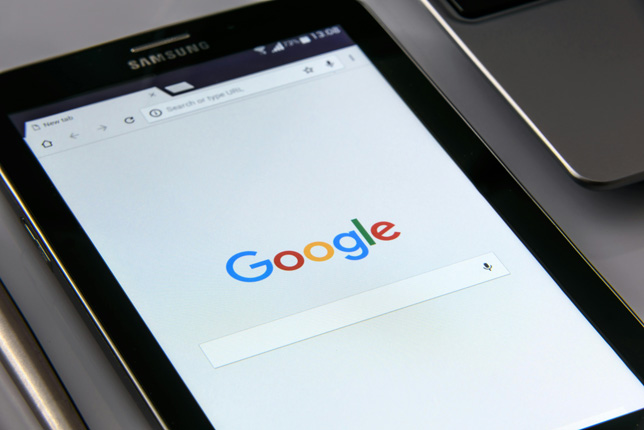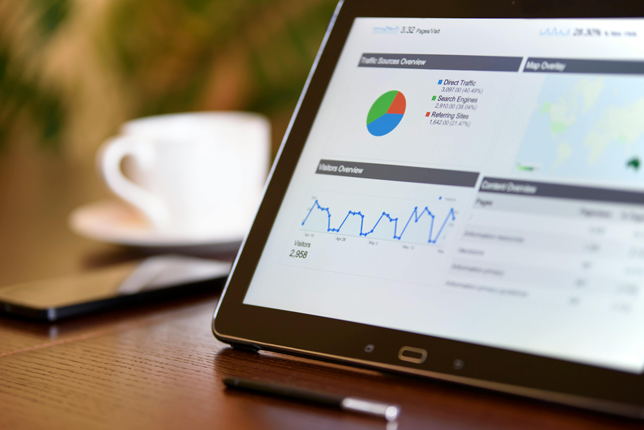
In the ever-evolving digital marketing landscape, selecting the right strategy can make or break your business’s success. Two of the most powerful strategies at your disposal are Search Engine Optimization (SEO) and Google Ads (SEM). Understanding their nuances and how they can complement each other is essential for creating an effective marketing plan.
At Optimanova, we are specialists in both SEO and Google Ads, leveraging our expertise to help clients achieve their marketing goals. This article will delve into the core aspects of both tools, highlighting their differences, benefits, and how they can work together to maximize your online presence.
Understanding SEO
What is SEO?
Search Engine Optimization (SEO) is the practice of improving the quality and quantity of a website’s traffic by increasing their visibility in search engines like Google, Bing, Yahoo, etc. The ultimate goal of this strategy is to rank higher on the search engine results page (SERP) of queries related to the product or service you are offering. All this without paying to obtain that position.

How Does SEO Work?
SEO efforts aim to align a website’s content and structure with search engine algorithms. This involves optimizing on-page elements (keywords, meta tags), earning quality backlinks (off-page SEO), and ensuring technical efficiency (site speed, mobile-friendliness). Search engines then evaluate these factors to rank the site for relevant search queries, improving visibility and traffic.
There are three main components of Search Engine Optimization:
- On-Page SEO: This involves optimizing the content and structure inside all of your website’s landing pages. It includes:
- Keyword Optimization: Researching and integrating relevant keywords into your content to match what the users are searching for.
- Content Creation: Producing high-quality, valuable content that meets user intent and engages visitors.
- Meta Tags: Crafting effective meta titles and descriptions to enhance click-through rates.
- Headers: Using header tags (H1, H2, H3) to structure content for better readability and to facilitate the crawling of your content by search engines.
- Internal Linking: Linking to other pages within your site to distribute link equity and improve navigation.
- Image Optimization: It involves all aspects related to the size, format and resolution of your site’s images, as well as the descriptive filenames and alternative text used to improve accessibility.
- URL Structure: Creating clean, descriptive URLs that reflect page content and include keywords.
- Off-Page SEO: This aspect focuses on increasing your website’s authority through backlinks from other reputable sites. Key strategies include:
- Link-Building: Acquiring high-quality backlinks from good-quality websites (according to Google’s criteria) to signal trust and authority to search engines. This involves creating shareable content, outreach, and partnerships.
- Social Media Marketing: Posting content on social media platforms to increase visibility and attract potential backlinks.
- Guest Blogging: Writing articles for other websites to gain exposure and backlinks.
- Influencer Outreach: Collaborating with influencers to expand reach and earn authoritative links.
- Brand Mentions: Earning mentions on other websites and forums to boost credibility.
- Technical SEO: This ensures your website is technically sound and search engine-friendly. Some key aspects are:
- Mobile-Friendliness: Ensuring your website is responsive and provides a seamless experience on all mobile devices.
- Site Speed: Enhancing load times through optimized images, code, and server performance to improve user experience and search engine rankings.
- Secure Connections (HTTPS): Implementing SSL certificates to secure data transmission, boosting user trust and search engine preference.
- Crawlability: Ensuring search engines can easily crawl and index your site using robots.txt, XML sitemaps, and clean URL structures
- Canonical Tags: Preventing duplicate content issues by using canonical tags to specify the preferred version of a page.
- Error Management: Regularly identifying and fixing 404 errors, broken links, and server issues to maintain site health and usability.
Exploring Google Ads
What are Google Ads?
Google Ads is a pay-per-click (PPC) advertising platform that allows businesses to display ads on Google’s search engine results pages (SERPs) and across the Google Display Network, which includes millions of websites and apps. Advertisers only pay when someone clicks on their ad, making it a cost-effective way to promote your business online.
The likelihood of an ad being shown depends on several factors. Google uses an Ad Rank system to determine which ads appear and in what order. Ad Rank is influenced by your bid, the quality of your ad and its landing page, your competitors, the expected impact of your ad assets, as well as the context of the user’s search.
Types of Google Ads Campaigns
The platform offers a wide range of campaign types to suit different goals. Advertisers can tailor their strategy to target specific demographics, geographic locations, and even times of the day. This flexibility allows businesses to reach their ideal customers more effectively.
Here are the different types of Google Ads campaigns:
- Search Campaigns: Text-based ads that are displayed at the top or bottom of Google search results when users type in specific keywords related to your products or services.
- Display Campaigns: Visually engaging ads that appear on different websites across the Google Display Network. You can target your ads based on factors like interests, demographics, and topics, making it a great way to reach potential customers who may not be actively searching for what you offer.
- Shopping Campaigns: Product-based ads that can be displayed on the shopping tab, Google images, Google Search Partner websites, and Google Maps. They can include the following information: name, picture, price, store name, etc.
- Video Campaigns: Ads that play on YouTube and across other video partner sites. You can choose from a variety of video ad formats, including skippable ads, non-skippable ads, and bumper ads. This is a great way to engage potential customers with compelling visuals and storytelling.
- App Campaigns: Ads designed to drive app downloads and engagement. This type of campaign allows apps to be promoted across Google’s search results, Google Play, YouTube, Google Display, and other Google properties.
- Performance Max Campaigns: Automated campaigns that use AI to optimize performance across all Google properties (Search, Display, YouTube, Discover, and Gmail). You provide a single campaign goal and creative assets, and Google’s algorithm determines the best way to reach potential customers.
- Demand Gen Campaigns: This campaign type focuses on generating demand for your products or services by targeting potential customers at different stages of the buyer’s journey. Similarly to Performance Max, they involve a combination of search, display, and video ads, and are designed to inform and persuade users to take action, such as visiting your website, contacting your sales team, or making a purchase.
Main Differences between SEO and Google Ads
Understanding the difference between SEO and Google Ads is crucial for developing an effective digital marketing strategy. While both aim to increase your online visibility, they operate in fundamentally different ways and offer distinct advantages. Let’s dig into the main aspects that make these two powerful strategies different.

Cost vs. Time
- SEO: SEO requires an upfront investment in content creation, technical optimization, and strategy development. Businesses often invest in tools and expert services to achieve optimal results. It takes time, usually months, but the long-term benefits make it cost-effective. However, continuous effort is needed to maintain rankings and organic traffic.
- Google Ads: Google Ads follows a cost-per-click model, which can add up for competitive keywords. You control your budget and can adjust spending as needed. The platform offers immediate visibility and traffic, ideal for short-term promotions. Despite this, once you stop paying, the traffic stops, making it less sustainable than SEO.
Visibility
- SEO: SEO enhances visibility in organic search results, which users often perceive as more credible and trustworthy than paid ads. Achieving high rankings can lead to consistent traffic without ongoing costs. SEO also covers a broader range of search queries through optimized content.
- Google Ads: This PPC advertising platform makes it easier to achieve a prominent placement at the top of search results, in YouTube videos, on Gmail, and across the Google Display Network. This high visibility can drive immediate traffic and conversions. However, you should keep in mind that your ads will be marked as sponsored, which some users may skip, preferring organic results.
Effort and Expertise
- SEO: Staying updated with search engine algorithm changes and evolving best practices is essential. It demands a strategic and patient approach, often requiring expertise in various aspects of digital marketing.
- Google Ads: Paid ads demand active management, including keyword research, bid adjustments, and performance monitoring. Creating compelling ad copy and landing pages is crucial for maximizing ROI. Regular analysis and tweaking of campaigns are necessary to maintain effectiveness and ensure budget efficiency.
How SEO and Google Ads Work Together

Have you ever wondered, “Does Google Ads help SEO?” or debated whether to invest in SEO or Google Ads? In the ongoing PPC vs. SEO debate, the truth is that both strategies can significantly complement each other. When combined, they can create a synergistic effect that strengthens your online presence and maximizes your ROI. By leveraging data from Google Ads, you can refine your SEO strategy, and insights from SEO can improve your ad targeting and content quality. Still, it’s important to be mindful of potential cannibalization – where your SEO and Google Ads efforts compete for the same traffic. Let’s explore how these two powerful tools can work together to benefit your business while minimizing the impact of competition between them.
Complementary Strategies
Using SEO and Google Ads together can maximize your online presence. While SEO builds a solid foundation for long-term growth, Google Ads can provide immediate traffic and visibility.
You can target long tail keywords with SEO where it is easier to rank and focus your Google Ads budget on those keywords that SEO cannot reach yet.
Data Utilization
Insights from Google Ads campaigns can inform your SEO strategy. For instance, identifying high-performing keywords in your ads can help you target those terms organically.
SEO Insights
SEO efforts can enhance your paid campaigns by improving landing page experience and relevance, which can lead to better keyword Quality Scores and lower cost-per-click on your ads. Additionally, SEO can help you identify long-tail keywords that may have lower competition but higher conversion rates.
Managing Keyword Cannibalization
Keyword cannibalization can occur between SEO efforts and PPC campaigns. When both target the same keywords, they can compete against each other, reducing the overall effectiveness of your digital marketing strategy and splitting your potential traffic and conversions.
To minimize cannibalization and maximize the benefits of both SEO and Google Ads, we recommend the following:
- Segment your keywords: Target different search intent or buyer stages with SEO and Google Ads. For instance, you could use high-intent, conversion-focused keywords in your ads and target informational or long-tail keywords with SEO.
- Monitor performance: Regularly track the performance of both SEO and Google Ads campaigns to identify potential cannibalization issues.
- Experiment and refine: Continuously test and adjust your strategies to find the optimal balance between both.
Having said that, in some cases, keyword cannibalization between SEO and Google Ads can be an intentional, aggressive strategy. By dominating both paid and organic results for the same keywords, you can occupy more space at the top of the SERPs, increasing your visibility and pushing competitors further down.
The Optimanova Take: How we use Google Ads and SEO

Ultimately, the answer to the question “Google Ads or SEO?” isn’t straightforward because the best approach is to leverage both strategies in tandem. SEO offers sustainable, long-term growth and builds your website’s authority, while Google Ads provides immediate visibility and precise targeting.
Here at Optimanova, we’ve consistently helped our clients achieve their business goals by combining SEO and PPC efforts in a comprehensive digital marketing strategy.
For instance, optimizing a website’s page speed (a crucial SEO factor) can also improve your Google Ads Keywords Quality Score, leading to lower costs per click and enhanced ad performance.
Data from Google Ads campaigns can also inform your SEO strategy by identifying high-converting keywords, allowing you to prioritize those terms organically and increase your visibility for high-intent keywords. At our agency, we usually review the global performance of the website at the end of the month and then make specific decisions for one area or the other, depending on the results.
Additionally, working on the content and messaging of the landing pages can improve your organic search visibility and improve conversion rates. This not only benefits SEO but also enhances ad relevance, leading to higher ad positions and lower costs. As a result, users who click on your ads are more likely to convert.
By considering both SEO and Google Ads, you can accelerate your business growth. When you launch a new product or try to access a new market, it might take some time for your website to generate visibility in the organic rankings, but if you invest in PPC you can get quick results while you build on that SEO momentum.
Enhance your Digital Presence with Optimanova’s SEO and SEM Expertise
At Optimanova, we are experts in both SEO and SEM, offering tailored strategies to help your business thrive online. Let us know what your business goals are and our team of experts will craft the perfect blend of SEO and SEM strategies to achieve your objectives. Contact us if you want to start maximizing your online presence and driving your business to new heights with our comprehensive digital marketing services.

